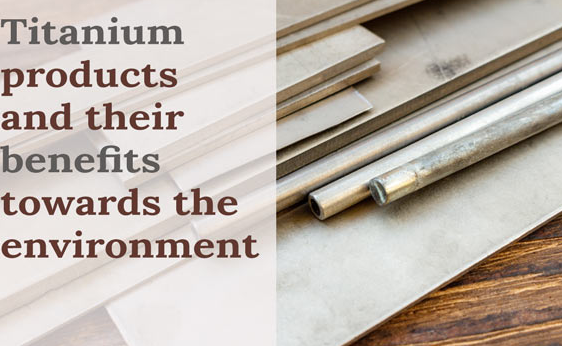In the landscape of advanced engineering and cutting-edge technology, few materials have had as profound an impact as titanium. Revered for its strength, light weight, and exceptional resistance to heat and corrosion, titanium has become an essential element in modern innovation. Its applications span across industries—from aerospace and biomedical to automotive, military, and beyond—solidifying its reputation as a material of the future.
This article explores how titanium is pushing the limits of performance, transforming what’s possible in engineering and technology, and setting new benchmarks for innovation.
Why Titanium? A Material With Extraordinary Properties
Titanium’s impressive mechanical and chemical characteristics make it a standout material in high-performance applications. Here’s what sets it apart:
- High Strength-to-Weight Ratio – Stronger than steel but nearly half the weight, titanium is ideal for weight-sensitive applications.
- Corrosion Resistance – Titanium naturally forms a passive oxide layer, protecting it from rust, seawater, and chemical exposure.
- Temperature Resilience – It retains strength and stability in extreme temperatures, both hot and cold.
- Biocompatibility – Safe to use inside the human body, it’s favored for implants and prosthetics.
- Low Thermal Expansion – Maintains dimensional stability under fluctuating temperatures.
These attributes make titanium not just versatile, but also a driving force behind next-generation engineering breakthroughs.
Titanium in Aerospace: Engineering for the Skies and Beyond
The aerospace sector has long embraced titanium as a key material for flight and space travel.
Aircraft Design
Titanium is used extensively in commercial and military aircraft due to its strength and lightness. It is found in:
- Jet engine components
- Fuselage structures
- Wing spars
- Hydraulic systems
By reducing weight without compromising structural integrity, titanium improves fuel efficiency, payload capacity, and overall performance.
Space Exploration
Titanium’s ability to withstand extreme temperatures and radiation makes it ideal for space missions. It’s used in:
- Rocket engine parts
- Satellite frames
- Deep-space probes
- Mars rover components
As space travel evolves toward colonization and long-term missions, titanium’s durability and versatility are crucial for building reliable, lightweight systems that can withstand the harsh environment of space.
Biomedical Engineering: Enhancing Health with Titanium
In modern medicine, titanium is revolutionizing patient care by enabling high-performance implants and surgical tools.
Medical Implants
Titanium is used in:
- Joint replacements (hips, knees, shoulders)
- Dental implants
- Bone plates and screws
- Spinal fusion devices
Its biocompatibility and osseointegration properties allow it to fuse with bone and tissue, creating long-lasting, non-reactive solutions that support mobility and quality of life.
Prosthetics and Surgical Tools
Lightweight and hypoallergenic, titanium is also used in:
- Custom prosthetic limbs
- MRI-safe surgical instruments
- Orthopedic devices
These innovations are transforming patient recovery and long-term outcomes, paving the way for personalized medicine and regenerative treatments.
Automotive Engineering: Speed, Safety, and Sustainability
Titanium is becoming increasingly prominent in the automotive industry, especially in high-performance and electric vehicles.
Performance Applications
- Exhaust systems
- Engine valves
- Connecting rods
- Brake calipers
Titanium reduces weight, improves fuel efficiency, and increases durability—making it a favorite for race cars and luxury vehicles.
Electric Vehicles (EVs)
In the EV space, titanium components help optimize battery enclosures, structural support, and heat dissipation systems. As automakers pursue lighter, safer, and more energy-efficient designs, titanium plays a critical role in achieving these goals.
Military and Defense Technology: Built for the Battlefield
Titanium’s strength, corrosion resistance, and stealth properties make it indispensable in military applications.
Applications in Defense:
- Armor plating for vehicles and personal gear
- Missile and submarine components
- Aircraft and drone structures
- Weapon housings and barrels
Its non-magnetic properties also make it suitable for stealth operations and underwater warfare, where radar or sonar detection must be minimized.
Additive Manufacturing: Titanium and the Rise of 3D Printing
One of the most exciting frontiers in engineering is the integration of titanium into additive manufacturing (3D printing). Using powdered titanium alloys, engineers can create:
- Lightweight, complex geometries
- Custom medical implants
- Aerospace brackets and components
- Heat exchangers with optimized flow paths
This approach reduces waste, improves design flexibility, and enables rapid prototyping and production, particularly for high-stakes applications where every gram matters.
Titanium in Energy and Environmental Engineering
Titanium is not just tough and durable—it’s also playing a role in clean energy and environmental sustainability.
Applications Include:
- Desalination plants: Titanium’s corrosion resistance is perfect for saltwater processing equipment.
- Geothermal and nuclear systems: Its strength and stability withstand high temperatures and pressures.
- Hydrogen storage and fuel cells: Research is underway on titanium alloys that can safely store hydrogen and improve fuel cell efficiency.
By enabling more efficient and longer-lasting systems, titanium is helping to advance global sustainability goals.
Titanium in Electronics and Consumer Technology
Titanium’s appeal extends beyond heavy industry into everyday tech products, where durability meets design.
Consumer Applications:
- Smartphone casings and laptop bodies
- High-end watches and wearables
- Eyeglass frames
- Audio equipment and speakers
Its sleek appearance, scratch resistance, and lightweight nature make it a premium choice for consumers seeking long-lasting, aesthetically pleasing products.
Overcoming Challenges in Titanium Engineering
Despite its advantages, titanium comes with a few challenges:
- Cost: Titanium is more expensive than many other metals due to energy-intensive extraction processes.
- Machining difficulty: It’s harder to cut, weld, and shape, which increases production time and costs.
- Limited raw availability: Though abundant in the Earth’s crust, extracting titanium economically remains a technical challenge.
However, emerging solutions are addressing these issues:
- New extraction methods like the FFC Cambridge process reduce production costs and environmental impact.
- Titanium recycling is becoming more efficient, reclaiming scrap from aerospace and medical industries.
- Advancements in machining technology and 3D printing are improving production workflows.
Future Outlook: Titanium at the Heart of Innovation
As technology evolves, the need for stronger, lighter, more durable, and sustainable materials becomes even more critical. Titanium is uniquely positioned to meet these demands.
Emerging Trends:
- Titanium matrix composites for ultra-high-strength parts
- Smart titanium alloys with shape memory or heat-sensing capabilities
- Titanium foams for bone regeneration and biomedical scaffolds
- AI-driven alloy design to create new blends tailored for specific industries
From next-gen aircraft and green energy systems to smart implants and custom 3D-printed parts, titanium is at the center of materials science innovation.
Conclusion: A Metal That Redefines Possibility
Titanium isn’t just a material—it’s a technological enabler. Its ability to meet the complex needs of advanced engineering and high-tech applications makes it one of the most valuable materials of the 21st century. As research progresses and manufacturing becomes more accessible, titanium will continue to break boundaries and lead the charge in reshaping the future of engineering, technology, and innovation.
Whether it’s soaring through space, embedded in the human body, or powering the next electric vehicle, titanium is truly pushing the boundaries of what we thought was possible.

Also Read :
